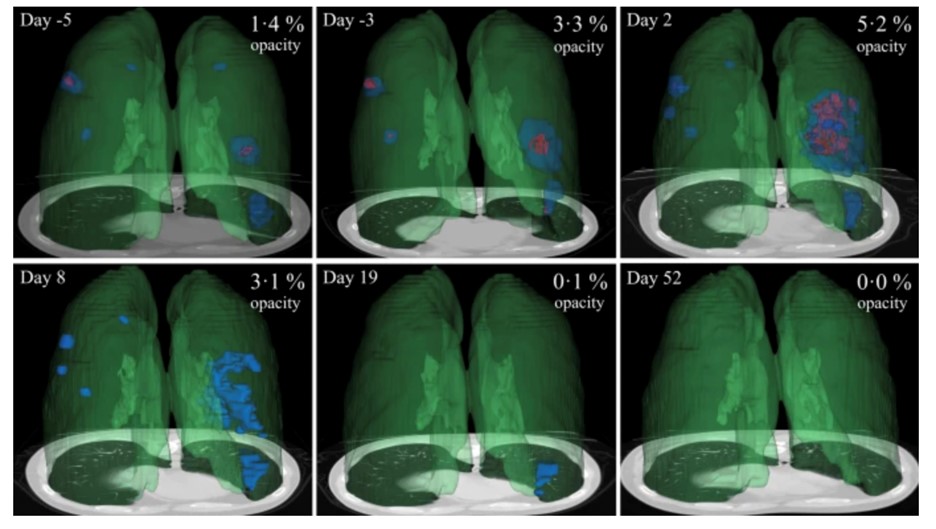CT scanning has provided critical information on the progression of the severity of the disease on COVID-19 patients. This article, published on March 25, 2021, provides an overview of the progression of the disease by referencing generalized curves of lung opacity volume and density over time for 739 COVID-19 patients, who undertook CTs and over 270 laboratory measurements.
The study shows that there is a temporal relationship between the lung opacity type; either ground glass opacity (GGO) or consolidation in which vessels and bronchial structures are obscured. For example, the results show that opacity peaked 1 day after the symptom onset, and GGO occurred earlier and resolved after consolidation, following a pattern in relation to the symptoms progression.
The study provides very in-depth information on opacity subtypes such as GGO, consolidation, atelectasis, sub-pleural reticulations, and crazy paving; as well as clear delineation of the lung, which were subsequently verified by radiologists, with no major inaccuracies identified.
The study clearly demonstrates that the correlation of CT scanning results and laboratory measurements is a powerful tool in identifying critical stages of the COVID-19 virus impact on the lungs and identify high risk patients, which in turns enables the clinical staff to provide the best treatments to the COVID-19 patients.
Read the full article on Nature.
